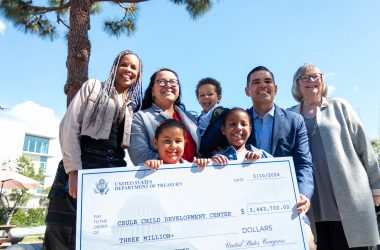Cal State Long Beach biology professor Steven L. Manley will be venturing into uncharted waters when he and a colleague begin their study to determine the severity of radioactive contamination on California’s kelp forests.
Manley will work with Kai Vetter, the head of the applied nuclear physics program at the Lawrence Berkeley National Laboratory, to examine kelp that is likely contaminated by radiation from Japan’s Fukushima nuclear power plant. The project has been named “Kelp Watch 2014.”
According to the Journal of Clinical Biochemistry and Nutrition, a large amount of radiation was released from the Fukushima power plant in 2011 after a large earthquake struck Japan and damaged the plant’s cooling systems.
Manley said part of his idea to create “Kelp Watch 2014” came after he co-published a paper on the concentration of radioactive iodine in California’s kelp forests.
He found that radioactive iodine had travelled from the Fukushima power plant and concentrated itself in kelp forests, Manley said.
“After the initial paper was published … I would get calls from concerned citizens … asking if it was safe to go into the kelp beds,” he said.
Manley said he told most callers that the radioactive iodine had a very short half-life, the time it takes for a radioactive substance to lose half its radioactivity, and that most of it had already decayed.
Instead of focusing his work on radioactive iodine alone, Manley said he wanted to study other radioactive contaminants that travelled from Japan to California through the Pacific Ocean.
“Ocean currents are very slow,” Manley said. “Most of the radioactivity released from damaged reactor went into the ocean.”
Manley said he expects the radioactive isotopes to arrive along California’s coastline sometime in 2014. He said he sought out Vetter when he realized that more advanced instrumentation was needed to monitor the kelp.
Manley said many people became excited when he started talking about “Kelp Watch 2014.”
“Everyone I talked to got really excited,” he said. “At present count, we have about 32 [sample] sites along the California coastline [with] two in Baja, Calif., two in Alaska [and] one in Washington.”
Manley said that two of the radioactive isotopes he hopes to study are cesium-134 and cesium-137. He added that the both isotopes have half-lives of more than two years.
Manley said the first sample of kelp will be taken in March but that it could be more than a year before all the kelp samples are collected.
“Each sample is 15 pounds of wet kelp,” Manley said. “That material has to be dried and pulverized.”
He said that it takes 24 hours to analyze each kelp sample.
Manley said he decided to study kelp rather than other types of sea life because of its unique properties.
“Kelp has the ability to suck things out of the water and concentrate it in its tissue,” he said. “Detecting [radioactive contamination] in kelp is easy.”
Manley said he also hopes to launch a website for the public that will keep them up-to-date with his findings throughout the study.
“I think we’ll see it in the kelp tissue in low amounts,” he said. “We’ll probably see it increase over time.”




